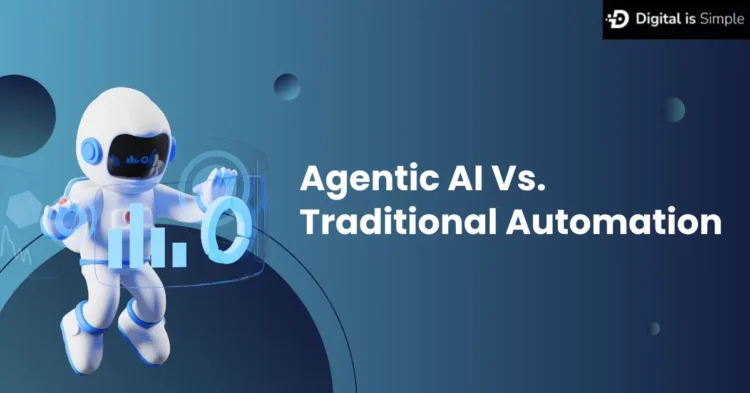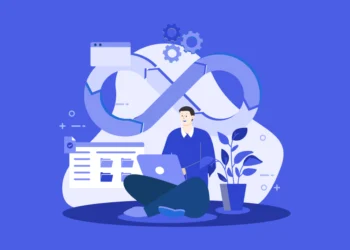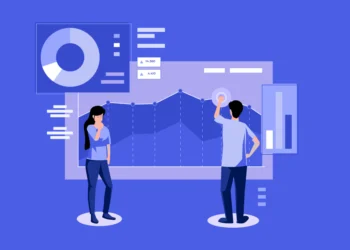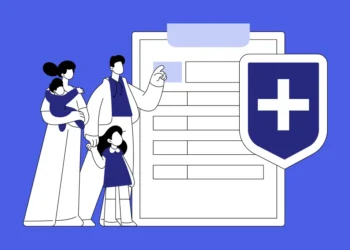Every business leader, researcher, scientist, and government body has either already explored or is currently considering Agentic AI development. One question that still arises is whether the traditional RPA Automation bots will be a better investment for you.
While the aim of both the AI is still the same, to improve efficiency, remove redundancy, and reduce manual labour, they work very differently.
Understanding how is Agentic AI different from traditional automation is crucial for any business looking to invest in its future.
This comprehensive blog guide explores the critical differences between these two approaches, examining their capabilities, applications, economics, and implications for the modern workplace.
Let’s start with the basics first, feel free to skip to the relevant section if you know the basics already.
What is Agentic AI?
If you ever wonder where the word “agentic” comes from, look no further than “agency”.
And what is agency?
It’s the capacity to act independently. Hence, the name “Agentic AI”. It highlights that these systems have the power to take purposeful actions on their own, much like a human agent would.
Forget thinking of them as just tools. These are like autonomous digital employees. They sense, decide, act, and learn in a continuous loop.
According to Gartner, the number of business software applications with built-in AI is set to explode in the next few years, which shows just how fundamental this shift is becoming. And, this shift is happening fast.
Modern Consumer & Enterprise Grade Agentic AI Examples
A Proactive Customer Support Agent:
This is the chatbot that actually solves your problem. Instead of just sending help articles, it takes action. It can even diagnose problems using your years of collected knowledge base, run diagnostics, initiate the refund process, and even schedule a call with a human agent if required.
An Advanced Personal Assistant:
Can you imagine an AI agent that can book tickets, order groceries, draft email, schedule appointments, not only can place orders but can make payment as well?
It’s already a reality with browser Comet paving the way.
An Agentic AI can analyse your style, budget, and calendar, browse multiple websites, compare prices, read reviews, and place orders, all without your direct input for each step.
An Autonomous Research Assistant:
For a scientist or analyst, an Agentic AI could be tasked with “finding all recent studies and summarizing their findings.” It would then autonomously search multiple databases, critically evaluate the sources, extract key data, and compile a comprehensive report.
What is Traditional Automation?
Traditional automation, often seen in Robotic Process Automation (RPA), is designed to automate repetitive, rule-based tasks.
It follows a strict “if-this-then-that” logic programmed by a human. Think of it as a tireless, ultra-fast clerk that can only work with what it’s explicitly told. .
Modern Consumer & Enterprise Grade Traditional Automation Examples:
- Processing payroll based on set rules
- Generating standard non-personalised email responses
- Automated resume screening
Difference Between Agentic AI vs. Traditional Automation
This is the central question. The difference lies in the core capabilities of each system.
The table below breaks down how is Agentic AI different from traditional automation across several key business dimensions.
| Attribute | Agentic AI | Traditional Automation |
| Core Function | Achieving complex goals autonomously | Executes pre-defined, repetitive tasks |
| Autonomy | High – Operates independently with minimal supervision | Low – Follows predefined rules and scripts |
| Decision-Making | Context-aware, multi-factor reasoning | Rule-based, deterministic logic |
| Learning Capability | Continuous learning from interactions | Static after deployment |
| Task Complexity | Can tackle complex workflows | Suitable for repetitive tasks |
| Adapts to New Situations? | Highly adaptable to changing conditions | Limited – requires reprogramming for changes. It breaks with any deviation |
| Handling Unstructured Data | Excels. Can process text, images, and ambiguous inputs. | Struggles or fails. Requires structured data. |
| Implementation Speed | Slow (3-6 months) | Fast (weeks to 2-3 months) |
| Maintenance Cost | Lower (30-40% less than traditional) | Higher (requires constant updates) |
| Analogy | A self-driving car on a busy street. | Robotic arm on an assembly line. |
| Scalability | Enterprise-wide across departments | Limited to specific isolated tasks |
Application of Agentic AI & Traditional (RPA Bot)
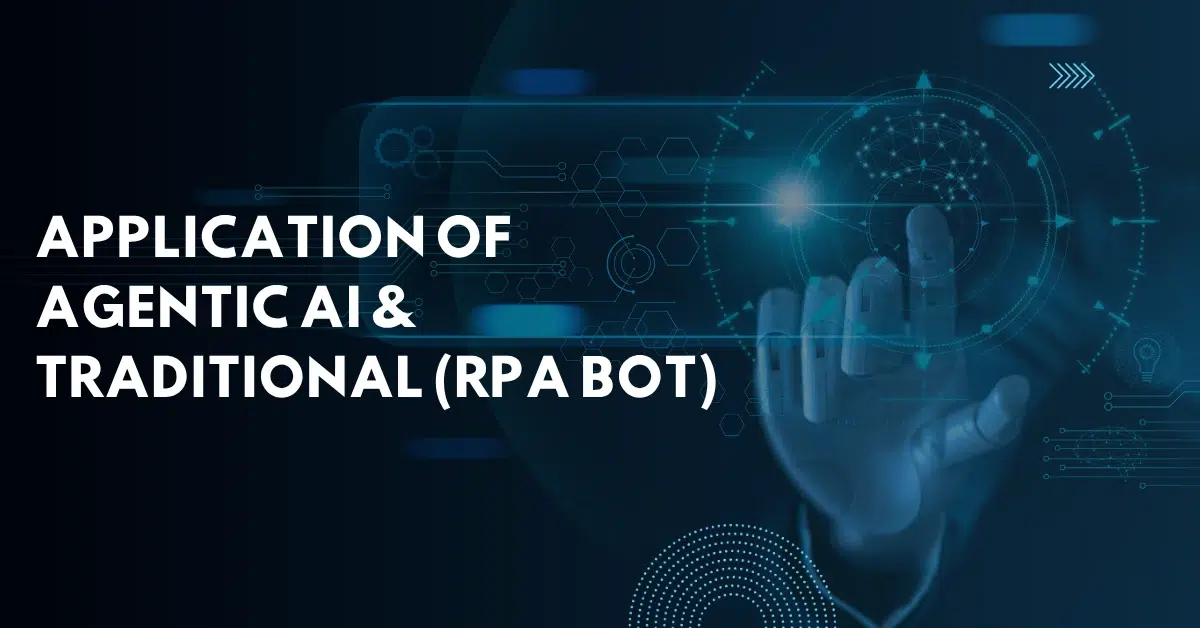 Traditional Automation (like an RPA bot) is like a meticulous intern who’s been given one very specific instruction: “Take these blue-form invoices and type the number, date, and total into this spreadsheet.”
Traditional Automation (like an RPA bot) is like a meticulous intern who’s been given one very specific instruction: “Take these blue-form invoices and type the number, date, and total into this spreadsheet.”
They’re incredibly fast and accurate—as long as every invoice is blue and uses the exact same form.
The moment you hand them a yellow invoice or a handwritten note, they freeze. They can’t figure it out, and you have to stop everything to give them new, detailed instructions.
Agentic AI is like that one employee who just gets it. You can just dump a pile of invoices on their desk (PDFs, scanny JPEGs, forwards from an email chain) and say, “Hey, can you process these?” And they just… do it
They can tell the difference between the Comcast bill and an invoice from a freelance graphic designer. They’ll match things up with purchase orders and even tap you on the shoulder to say, “Hey, this number looks a little off, you might want to take a peek.” And the best part? If you tell them, “Actually, for this vendor, we use a different account,” they just nod and remember it for next time.
Difference in Terms Of Workflow?
This is a critical distinction in understanding how Agentic AI is different from traditional automation.

Traditional Automation (Linear Workflow) :
Traditional automation is fundamentally rigid, operating within a strict, pre-defined box with very little room for independent thought.
Systems like RPA bots are built on simple “if-then-else” logic, which means they falter the moment a situation calls for judgment, contextual understanding, or balancing nuanced trade-offs.
In the real world use, where process exceptions are common, this limitation inevitably forces human employees to step in and resolve the stalemate.
The process is a straight line: Trigger -> Execute Pre-Programmed Steps -> End. It’s a simple playbook with no deviation. (Input Invoice -> Extract Field A, B, C -> Enter into System -> Task Complete).
Agentic AI: Cyclical Autonomy Model:
The concept of agentic AI, however, is characterized by its abilities to make true decisions. These systems are able to process a complex situation with several variables, apply a machine learning process to predict what may happen, and smartly prioritize conflicting priorities in order to make the most appropriate decision.
The essence of it is as follows: when the automation used in the traditional manner has to be programmed with respect to each and every potential variation, the Agentic AI is able to adapt to the unforeseen. It uses acquired principles and justifies its solutions to new problems.
As an example, a more classic loan application bot will be unable to operate on a non-standard income structure, whereas an agentic AI will be able to take different data points, wider financial expertise, and make a justifiable underwriting decision independently.
The process is a continuous, intelligent loop: Perceive -> Plan -> Act -> Learn -> (Repeat). The AI constantly reassesses its environment and adjusts its strategy to achieve its goal, making it resilient and dynamic.
Will Agentic AI Kill Traditional Automation?
No!
They are complementary to each other and suited for solving different problems.
Traditional automation is more suited for repetitive, high-volume, and predictable tasks. Making them perfect where speed and accuracy are the only goals.
Agentic AI is suitable for complex, cognitive, and unpredictable tasks.
The most powerful future operations will likely involve a synergy of both. Traditional automation handles the simple, repetitive groundwork, managed by a more intelligent Agentic AI system that tackles the exceptions and complex decision-making.
What Makes Agentic AI Different from Traditional Automation Tools
The fundamental difference is cognitive ability. Traditional automation tools are muscle; they perform the heavy lifting of repetitive tasks. Agentic AI is a brain; it understands, reasons, learns, and makes judgement calls.
It moves business software from being a passive tool to an active participant in achieving business outcomes.
How Should Employees Think About an AI Agent-Enhanced Workplace
Let’s be real – everyone has parts of their job they wish would just disappear. Agentic AI can actually make that happen.
It will automate the most tedious parts of your jobs, like data gathering, preliminary analysis, and routine tasks.
The end result is employees who are free to focus on higher-value work that requires human creativity, strategic thinking, and complex problem-solving. Successful employees will be those who learn to use, manage, and collaborate with these AI agents.
Challenges and Limitations of Agentic AI & Automation
- Agentic AI Challenges: High development cost, complexity, potential for unpredictable outcomes (“emergent behavior”), and significant need for quality data. Ethical considerations and governance are also major hurdles.
- Traditional Automation Limitations: Extreme brittleness (breaks easily), inability to handle change or exceptions, zero creativity, and can create “automation blind spots” where businesses fail to see inefficient underlying processes that need re-engineering.
Conclusion
It is not an option of which technology is better but rather, what is the appropriate tool in the job.
- Select Traditional Automation when you want to speed up a well-known, high-throughput, rule-based process that is never changed. It is an excellent way of attaining efficiency in operations.
- In situations where you face complex processes where there is unstructured data, need adaptation, and intuitive decision making, use Agentic AI. It is a strategic innovation and resilience investment.
The final aim in the eyes of a progressive business is to learn how is Agentic AI different from traditional automation to create an ecosystem that leverages both technologies work together to lead to development.
FAQ
1. Is it possible to combine Agentic AI and Traditional Automation?
Yes. Agentic AI can oversee RPA bots—handling complex decisions while bots manage repetitive tasks. Together, they create a layered and efficient automation setup.
2. Is Agentic AI more expensive to implement than Traditional Automation?
Traditional automation like RPA is faster and cheaper to deploy. Agentic AI requires higher upfront investment in data and computing but delivers greater long-term value and scalability.
3. How does the ROI of Agentic AI differ from traditional RPA?
RPA offers a quick return within months by cutting labor costs, but maintenance can reduce long-term gains. Agentic AI takes longer to show results but provides compounding strategic ROI over time.
4. What is Agentic Drift, and how should it be managed?
Agentic Drift happens when an autonomous AI gradually deviates from its goal. To prevent this, ensure the AI development company you choose follows a strong governance framework and conducts rigorous testing throughout development.
5. How can Agentic AI be applied in complex industries like Finance or Manufacturing?
In Finance, it enables automated loan approvals, fraud detection, and compliance monitoring. In Manufacturing, it supports real-time supply chain optimization and autonomous production scheduling.
6. How should we assess our IT readiness for Agentic AI implementation?
Focus on data architecture and system integration. Ensure centralized data storage (like a data lake) and compatibility between core systems (ERP, CRM, APIs) and the AI framework.
7. Does Agentic AI development require different skills than traditional automation?
Yes. It demands expertise in large language models, prompt engineering, memory systems, and API orchestration—skills beyond traditional RPA development.
8. What is the strategic value of Agentic AI for a CIO beyond cost savings?
Agentic AI drives innovation and revenue growth. It frees experts for strategic work, enables real-time market response, and builds adaptive, future-ready digital operations.

